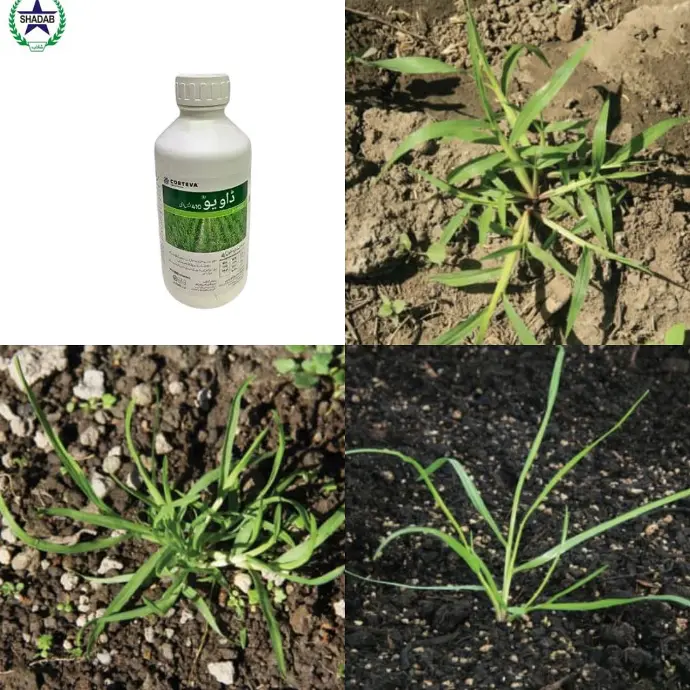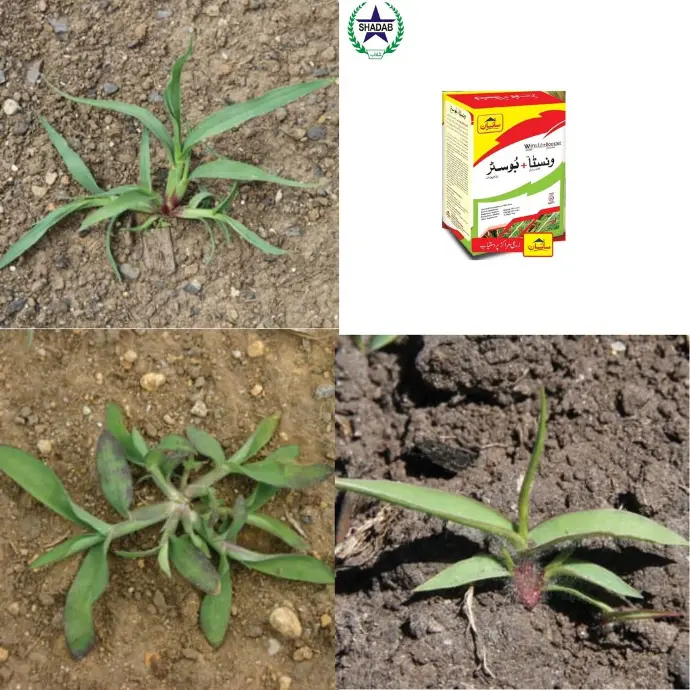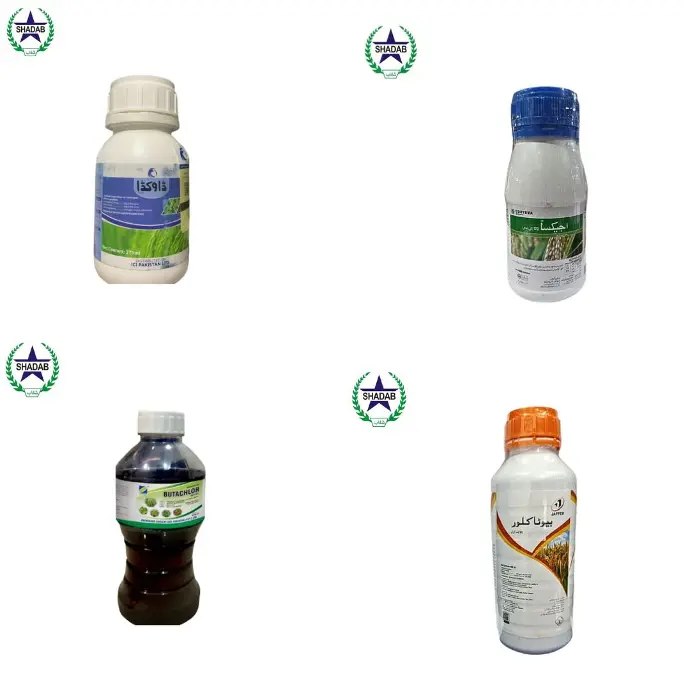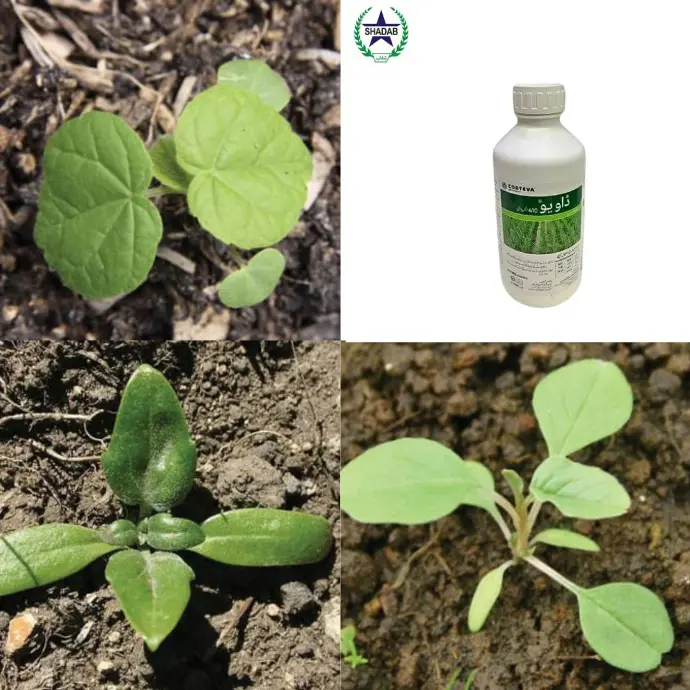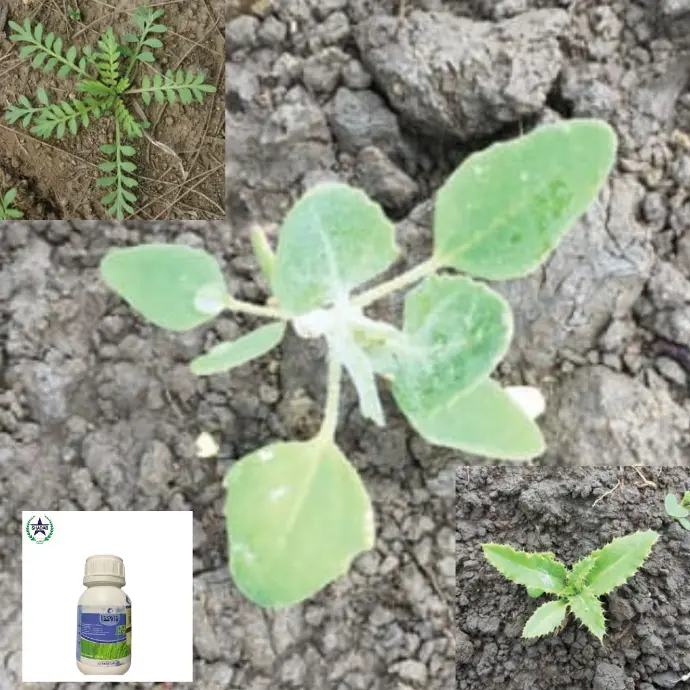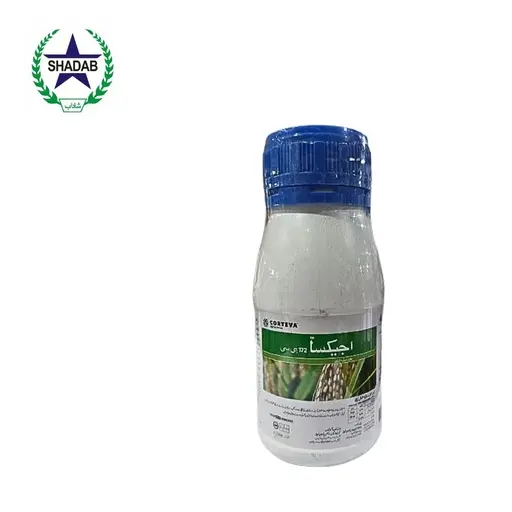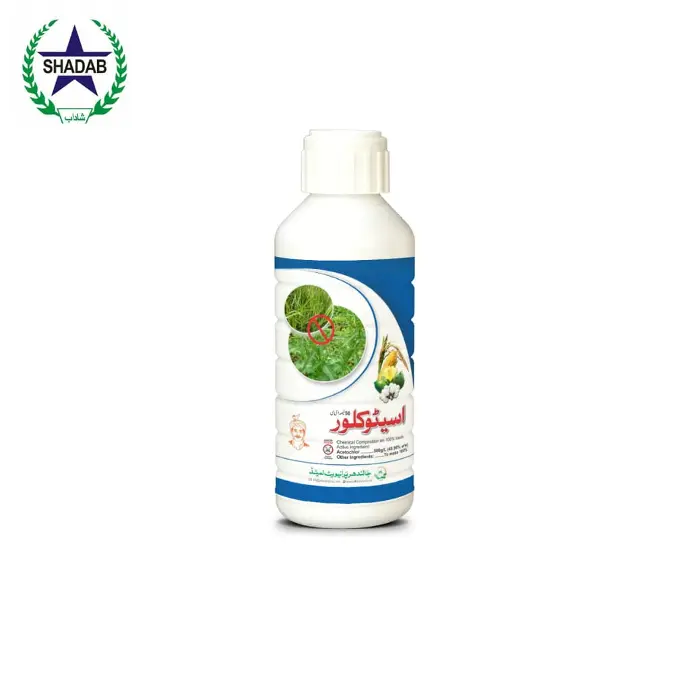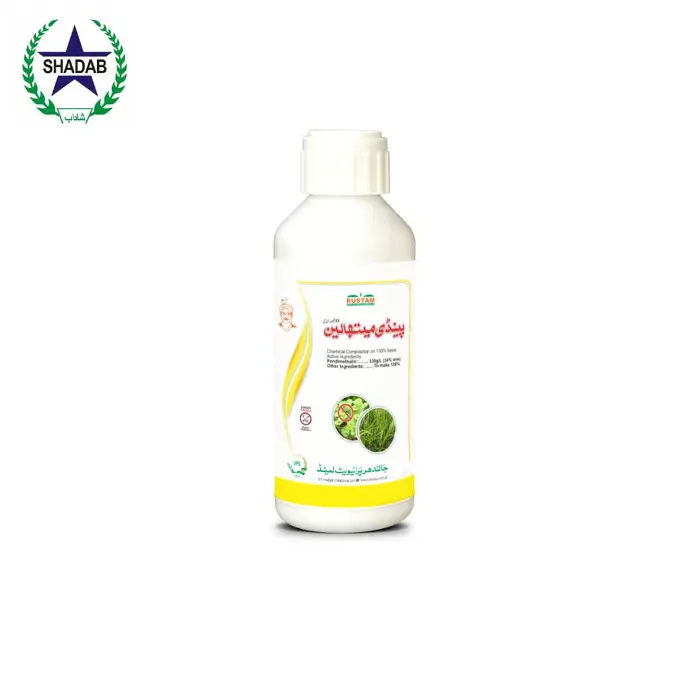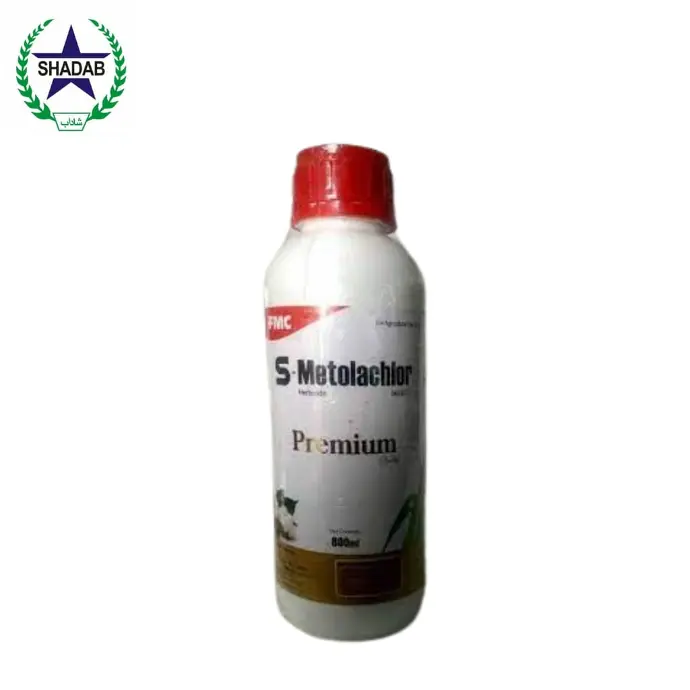MAIZE WEEDS MANAGEMENT
Effective weeds Management of weeds
The cultivation of maize is significantly affected by the presence of weeds, which not only diminish crop yields but also adversely impact the financial returns for farmers. Weeds compete with maize for essential resources such as light, water, and nutrients, leading to a decline in both growth and yield. To mitigate the negative influence of weeds on maize production, it is crucial to implement effective weed management strategies. This can be achieved through an integrated approach that combines mechanical, chemical, and cultural control methods. A particularly effective strategy involves the application of herbicides, both pre-emergence and post-emergence, either in a sequential manner or as a single treatment.
Specific guidelines while using a Herbicide
When utilizing chemical methods for weed control, it is essential to adhere to specific guidelines to ensure safety and efficacy. It is advised not to use treated weeds as fodder following herbicide application. For optimal results, herbicides should be applied to spring corn as soon as weeds begin to emerge, with a recommended watering rate of 120 liters per acre, using clean water for spraying. Additionally, it is important to avoid spraying during adverse weather conditions such as heavy rain, fog, or wind. For standard applications, employing a nozzle such as a flat fan or T-Jet is recommended to achieve uniform coverage.
جڑی بوٹیوں کی موجودگی سے مکئی کی کاشت نمایاں طور پر متاثر ہوتی ہے جس سے نہ صرف فصل کی پیداوار کم ہوتی ہے بلکہ کسانوں کے مالی منافع پر بھی منفی اثر پڑتا ہے۔ جڑی بوٹیاں ضروری وسائل جیسے روشنی، پانی اور غذائی اجزاء کے لیے مکئی سے مقابلہ کرتی ہیں، جس کی وجہ سے نشوونما اور پیداوار دونوں میں کمی واقع ہوتی ہے۔ مکئی کی پیداوار پر جڑی بوٹیوں کے منفی اثر کو کم کرنے کے لیے، مؤثر جڑی بوٹیوں کے انتظام کی حکمت عملیوں کو نافذ کرنا بہت ضروری ہے۔ یہ ایک مربوط نقطہ نظر کے ذریعے حاصل کیا جا سکتا ہے جو مکینیکل، کیمیائی اور ثقافتی کنٹرول کے طریقوں کو یکجا کرتا ہے۔ ایک خاص طور پر موثر حکمت عملی میں جڑی بوٹیوں کی دوائیوں کا استعمال شامل ہے، جو کہ ظہور سے پہلے اور ظہور کے بعد، یا تو ترتیب وار طریقے سے یا ایک ہی علاج کے طور پر، جب کہ جڑی بوٹیوں پر قابو پانے کے لیے کیمیائی طریقوں کا استعمال کرتے ہوئے، حفاظت کو یقینی بنانے کے لیے مخصوص ہدایات پر عمل کرنا ضروری ہے۔ مطلب۔ یہ مشورہ دیا جاتا ہے کہ جڑی بوٹیوں کے استعمال کے بعد چارے کے طور پر علاج کیے جانے والے ماتمی لباس استعمال نہ کریں۔ بہترین نتائج کے لیے، جڑی بوٹی مار دوا کو موسم بہار کی مکئی پر لگائیں جیسے ہی جڑی بوٹیوں کے نکلنا شروع ہو جائیں، پانی دینے کی تجویز کردہ شرح 120 لیٹر فی ایکڑ کے ساتھ، سپرے کے لیے صاف پانی کا استعمال کریں۔ مزید برآں، یہ ضروری ہے کہ منفی موسمی حالات جیسے کہ تیز بارش، دھند، یا ہوا کے دوران سپرے کرنے سے گریز کیا جائے۔ معیاری ایپلی کیشنز کے لیے، یکساں کوریج حاصل کرنے کے لیے نوزل جیسے فلیٹ فین یا T-Jet کو استعمال کرنے کی سفارش کی جاتی ہے۔
List of weedicides of maize
The following is a compilation of prevalent weeds found in maize cultivation: Amaranthus, Bathurst bur, Californian thistle, dock, fathen, nightshade, shepherd's purse, spurrey, twincress, velvetleaf, willow weed, and wireweed.In terms of grass weeds that commonly affect maize fields, notable species include barnyard grass, purple nut grass, rye grass, which is a perennial variety, witch grass, yellow bristle grass, summer grass, and rough bristle grass. Additionally, broomcorn millet, couch grass, Indian doab, kikuyu, and Poa are also significant in this context. Effective management strategies are essential for controlling these weeds to ensure optimal maize crop health and yield.For the mangement of grass like weeds it is recommended to use Winsta booster, Daoyou, daokda, agixa and butachlor while for sedges it is recommended to use daoyou, daokda and agixa. and for the control of broadleaf weeds it is recommended to use weedicides like Dooaba,agixa, daokda and daoyou.
وہ مندرجہ ذیل مکئی کی کاشت میں پائے جانے والے مروجہ ماتمی لباس کی ایک تالیف ہے: امارانتھس، باتھرسٹ بر، کیلیفورنیا تھیسٹل، ڈاک، فیتھن، نائٹ شیڈ، چرواہے کا پرس، اسپری، ٹوئنکریس، مخمل کے پتوں، ولو گھاس اور تار کے گھاس۔ مکئی کے کھیت، قابل ذکر انواع میں بارنیارڈ گھاس، جامنی رنگ کی گھاس، رائی گھاس، جو ایک بارہماسی قسم ہے، چڑیل گھاس، پیلی برسٹل گھاس، موسم گرما کی گھاس، اور کھردرا برسٹل گھاس شامل ہیں۔ مزید برآں، جھاڑو کارن باجرا، سوفی گھاس، انڈین دوآب، کیکیو اور پوا بھی اس تناظر میں اہم ہیں۔ مکئی کی فصل کی بہترین صحت اور پیداوار کو یقینی بنانے کے لیے ان جڑی بوٹیوں کو کنٹرول کرنے کے لیے موثر انتظامی حکمت عملی ضروری ہے۔
Categories of Weeds
Weeds can be categorized based on their leaf structure, which includes both broad and narrow leaves. Various chemical treatments are available for effective weed management, such as Pendimethalin at a concentration of 33%. Additionally, a combination of Atrazine at 38% and Acetochlor at 50% is effective against both broad and narrow-leaved weeds. Another option includes S-metolachlor combined with Atrazine at a total of 72%, which also targets a similar range of weed types.
جڑی بوٹیوں کو ان کے پتوں کی ساخت کی بنیاد پر درجہ بندی کیا جا سکتا ہے، جس میں چوڑے اور تنگ دونوں پتے شامل ہیں۔ جڑی بوٹیوں کے مؤثر انتظام کے لیے مختلف کیمیائی علاج دستیاب ہیں، جیسے کہ Pendimethalin 33% کی ارتکاز میں۔ مزید برآں، 38% پر Atrazine اور 50% پر Acetochlor کا مرکب چوڑے اور تنگ پتوں والے جڑی بوٹیوں کے خلاف مؤثر ہے۔ ایک اور آپشن میں شامل ہے S-metolachlor کو Atrazine کے ساتھ ملا کر مجموعی طور پر 72%، جو کہ گھاس کی اقسام کی ایک جیسی حد کو بھی نشانہ بناتا ہے۔
Control of Post-Emergence Weeds
For post-emergence control, several formulations can be utilized. Atrazine combined with Mesotrione can be applied at a rate of 750 ml, while another mixture of Atrazine and Mesotrione at 50% is recommended for application after the weeds have emerged. Furthermore, a higher concentration of Atrazine and Mesotrione at 55% can be applied at specific times after emergence, along with a lower concentration of 25% at 650 ml for effective weed management.
ظہور کے بعد کے کنٹرول کے لیے، کئی فارمولیشنز کو استعمال کیا جا سکتا ہے۔ Mesotrione کے ساتھ مل کر ایٹرازین 750 ملی لیٹر کی شرح سے لگائی جا سکتی ہے، جب کہ جڑی بوٹیوں کے نکلنے کے بعد ایٹرازائن اور میسوٹریون کا ایک اور مرکب 50 فیصد استعمال کرنے کی سفارش کی جاتی ہے۔ مزید برآں، 55% پر Atrazine اور Mesotrione کی زیادہ ارتکاز کو ظہور کے بعد مخصوص اوقات میں لاگو کیا جا سکتا ہے، اس کے ساتھ مؤثر جڑی بوٹیوں کے انتظام کے لیے 650 ملی لیٹر پر 25% کی کم ارتکاز کے ساتھ۔
Application method of weedicide
In terms of application methods, it is crucial to spray the herbicides within 24 hours after sowing to ensure maximum efficacy. For broader coverage, a mixture of Atrazine, Mesotrione, and Halosulfuron at 58% can be applied at a rate of 500 g before emergence. The recommended dosage varies, with some applications suggesting 1000 ml before emergence and others recommending a split application of 350 ml + 350 ml. It is essential to target the 2 to 4 leaf stage of the weeds for optimal results, with application rates ranging from 330 to 400 g or 500-750 ml, depending on the specific formulation used.
استعمال کے طریقوں کے لحاظ سے، زیادہ سے زیادہ افادیت کو یقینی بنانے کے لیے بوائی کے بعد 24 گھنٹوں کے اندر جڑی بوٹی مار ادویات کا سپرے کرنا بہت ضروری ہے۔ وسیع تر کوریج کے لیے 58% پر Atrazine، Mesotrione اور Halosulfuron کا مرکب ظہور سے پہلے 500 g کی شرح سے لگایا جا سکتا ہے۔ تجویز کردہ خوراک مختلف ہوتی ہے، کچھ ایپلی کیشنز ظہور سے پہلے 1000 ملی لیٹر تجویز کرتی ہیں اور دیگر 350 ملی لیٹر + 350 ملی لیٹر کی تقسیم کی تجویز کرتی ہیں۔ استعمال شدہ مخصوص فارمولیشن پر منحصر ہے، 330 سے 400 گرام یا 500-750 ملی لیٹر تک اطلاق کی شرح کے ساتھ، بہترین نتائج کے لیے جڑی بوٹیوں کے 2 سے 4 پتوں کے مرحلے کو نشانہ بنانا ضروری ہے۔
